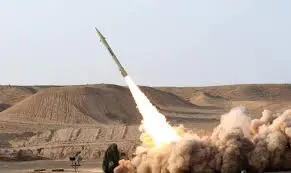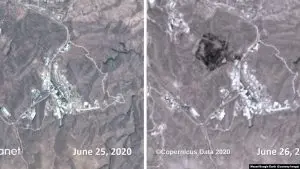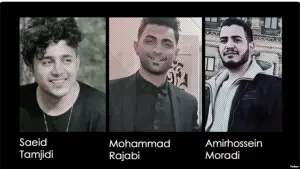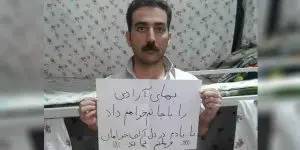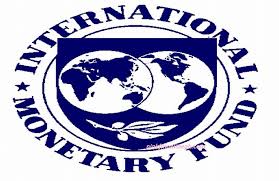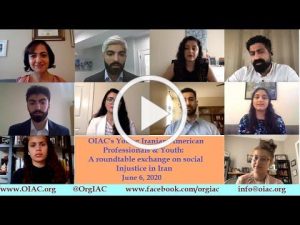 State Dept. lays out Iranian terror record amid push to extend arms embargo
State Dept. lays out Iranian terror record amid push to extend arms embargo
Fox News, June 25, 2020
The State Department on Wednesday issued a report on global terrorism that outlined Iran’s funding and backing of terrorism abroad — just as the Trump administration escalates its efforts to extend an arms embargo on the rogue regime set to expire in October.
“The Iranian regime and its proxies continued to plot and commit terrorist attacks on a global scale,” the report, Country Reports on Terrorism 2019, says.
The department mentions Iran throughout the entire report, not only in the section on Iran but also in relation to the terror threat in other countries in the Middle East and North Africa, in particular, via the Iranian Revolutionary Guard Corps’ Quds Forces (IRGC-QF). The Trump administration ordered an airstrike earlier this year that out General Qassem Soleimani, the leader of the Quds.
The report says the regime in Tehran has used the group to “provide support to terrorist organizations, provide cover for associated covert operations, and create instability in the region.”
“Through the IRGC-QF, Iran continued its support to several U.S.-designated terrorist groups, providing funding, training, weapons, and equipment. Among the groups receiving support from Iran are Hezbollah, Hamas, Palestine Islamic Jihad, Kata’ib Hezbollah (KH) in Iraq, and al-Ashtar Brigades in Bahrain,” the report says. “Iran also provided weapons and support to Shia militant groups in Iraq, to the Houthis in Yemen, and to the Taliban in Afghanistan.”
It goes on to say that the regime is unwilling to bring senior Al Qaeda members to justice or even to identify those living in the country or in custody — saying it has allowed members “to operate a core facilitation pipeline through Iran since at least 2009, enabling AQ [Al Qaeda] to move funds and fighters to South Asia and Syria.”
It also accuses Iran of supporting terror plots in dissidents from groups such as the National Council of Resistance of Iran (NCRI) in European countries, including the Netherlands, Belgium and Albania.
In a statement reacting to the report, the NCRI said it was a sign that the regime was becoming increasingly shaky.
“The fact that most of the terrorism of the Iranian regime in Europe has been directed against the main Iranian opposition movement, signals Tehran’s extreme vulnerability inside Iran and its fear of overthrow, especially in light of the several waves of uprisings since 2018,” Alireza Jafarzadeh, deputy director of the NCRI’s Washington office, said in a statement.
Click to read more
New Iranian Missile Could Strike Central Europe: Analysis
Breaking Defense, June 29, 2020
On the 22nd of April, Iran surprised the world by successfully launching the Noor satellite, using a previously unknown Satellite Launch Vehicle (SLV) which they call Qased.
The US Space Force confirmed that Noor reached orbit, together with a second object, assessed as the spent upper stage.
A detailed analysis of the Qased, based on open sources and using computer simulations to calculate trajectories, shows it has a strong relationship to the Shahab-3 ballistic missile Qasedand the Safir SLV, together with a number of unusual features for an SLV. If SLV compromises were removed, restoring the design optimization for use as a ballistic missile, the Qased can reach Central Europe and parts of Northern Europe, depending on its payload mass.
Iran’s previous satellite launch attempts have been notoriously unreliable. Last year a Safir SLV exploded on its launch pad and the much larger Simorgh SLV has never successfully placed a payload in orbit.
As demonstrated in its ballistic missile attack against Al Asad airbase in January, Iran has made great leaps in improving the accuracy of its ballistic missiles, using maneuvrable re-entry vehicles with terminal guidance. Such a re-entry vehicle has also been tested on its Emad missile, with a stated maximum range of 1,700 km.
So far, Iran says it officially limits the maximum range of its ballistic missiles to 2,000 km; sufficient to reach Israel and Saudi Arabia, the stated foes of the Iranian regime. The US government maintains that Iran’s SLV development is a cover for building long-range ballistic missiles and this analysis does not contradict that assertion.
Table 1 lists payloads and ranges for Iran’s ballistic missile arsenal, as displayed in a recent Iranian TV documentary.
Click to read more
Satellite image: Iran blast was near suspected missile site
AP, June 27, 2020
DUBAI, United Arab Emirates (AP) — An explosion that rattled Iran’s capital came from an area in its eastern mountains that analysts believe hides an underground tunnel system and missile production sites, satellite photographs showed Saturday.
What exploded in the incident early Friday that sent a massive fireball into the sky near Tehran remains unclear, as does the cause of the blast.
The unusual response of the Iranian government in the aftermath of the explosion, however, underscores the sensitive nature of an area near where international inspectors believe the Islamic Republic conducted high-explosive tests two decades ago for nuclear weapon triggers.
The blast shook homes, rattled windows and lit up the horizon early Friday in the Alborz Mountains. State TV later aired a segment from what it described as the site of the blast.
One of its journalists stood in front of what appeared to be large, blackened gas cylinders, though the camera remained tightly focused and did not show anything else around the site. Defense Ministry spokesman Davood Abdi blamed the blast on a leaking gas he did not identify and said no one was killed in the explosion.
Abdi described the site as a “public area,” raising the question of why military officials and not civilian firefighters would be in charge. The state TV report did not answer that.
Satellite photos of the area, some 20 kilometers (12.5 miles) east of downtown Tehran, showed hundreds of meters (yards) of charred scrubland not seen in images of the area taken in the weeks ahead of the incident. The building near the char marks resembled the facility seen in the state TV footage.
The gas storage area sits near what analysts describe as Iran’s Khojir missile facility. The explosion appears to have struck a facility for the Shahid Bakeri Industrial Group, which makes solid-propellant rockets, said Fabian Hinz, a researcher at the James Martin Center for Nonproliferation Studies at the Middlebury Institute of International Studies in Monterey, California.
Click to read more
Iran Protests & more




Iran Supreme Court Upholds Death Sentence For Three Young Protesters
Radio Farda, June 24, 2020
IIran Human Rights News Agency (HRANA) on Wednesday reported that the Supreme Court of Iran has upheld the death sentences of three young men who were arrested by security forces during the November 2019 protests.
The confirmation of the death sentences passed on Amir-Hossein Moradi, Saeed Tamjidi and Mohammad Rajabi, who had all been sentenced to prison, lashes and a death sentence by the Revolutionary Court for various charges brought against them has not been officially announced. However, the lawyer of one of the defendants in the case who did not want to be named for his own safety, has informed HRANA of the Supreme Court’s decision.
Security forces identified and arrested Amir-Hossein Moradi from CCTV footage during the November 2019 protests. He was beaten during his arrest and interrogations and held in solitary confinement for a month. He was also tortured and coerced to appear on the state-run television to “confess” that he had set fire to banks and gas stations and damaged public property, even before having been tried and sentenced by a court. Moradi and other defendants in the case were denied access to lawyers during the investigation phase.
The two others, Mohammad Rajabi and Saeed Tamjidi, fled to Turkey after their friend Moradi was detained but were arrested in Turkey and despite producing ample evidence of being in danger for participating in the protests, Turkish security forces deported them to Iran where they were immediately arrested.
The three defendants in the case, all of them in their twenties, have been accused of affiliation with the Mujahedin-e Khalq Organization (MEK) which Iran has designated as a terrorist organization but have always denied the charges.
Another defendant in the case, Mojgan Eskandari, has been sentenced to life on similar charges while a fifth defendant whose full name has not been disclosed is awaiting trial.
Click to read more
Death Certificate Indicates Political Prisoner Killed by Firing Squad
Iran HRM, June 21, 2020
Forty-four days after the execution of Kurd political prisoner Hedayat Abdullahpour, his family learned that he was killed by a firing squad on May 11.
Based on a death certificate handed over to Hedayat Abdullahpour’s family, they confirmed today that his execution was carried out in a barrack in the northwestern town of Oshnavieh.
Farhad Abdullahpour, Hedayat’s brother, confirmed the news and said: “The registry office of Oshnavieh has issued a death certificate for Hedayat Abdullahpour, according to which Hedayat was executed on May 11.”
The death certificate states the cause of death was a “collision of a hard object or a bullet.”
The Kurdish political prisoner who had been on death row in the central prison in Urmia, West Azerbaijan province, since 2017, was transferred to an undisclosed location on May 9, 2020.
His family sought information about his fate and whereabouts from various official entities. However, Iranian authorities refused to provide them with any information.
On May 12, the deputy prosecutor in Urmia told his family: “When the ministry of intelligence and the Revolutionary Guards do not tell you where your relative is, you better refer to the cemetery.”
On June 10, the head of the Centre for the Implementation of Sentences in the city of Urmia in Iran’s West Azerbaijan province, told his family he had been executed three weeks ago.
When the family asked why they had not been informed in advance, the official claimed that he was not allowed to provide further information. He added that the execution had been carried out following “an order from above,” in apparent reference to the Revolutionary Guards overseeing the case.
The authorities have refused to reveal the location of the dissident’s grave so far.
Pleading with Iranian judiciary chief Ebrahim Raisi for information about the dissident, his father, Abubakar, said in a voice message on June 15: “Shame on you. If you have executed my child, return his body. Set Islam aside and be a human.”
Click to read more
Commentary:IMF is angling to undermine US sanctions against Iran
Washington Examiner, June 29, by Nikki Haley
When I served as the U.S. ambassador to the United Nations, I made it clear that the American people expect the institution to uphold its founding ideals, and to hold irresponsible regimes accountable for their actions. That was badly needed in the cases of Russia, China, Iran, Cuba, and Venezuela, among others.
The same is true with the rest of the multilateral system. Our country helped establish that system after the Second World War, and we remain by far the world’s largest funder of it today. We need to examine closely whether we are getting a decent return on our investment.
The coronavirus pandemic has laid bare that many international bodies are still willing to do the bidding of some of the world’s most dangerous nations — including Iran. This is unacceptable, and it demands a swift and strong response from the United States.
The International Monetary Fund, a U.N. subsidiary and the world’s premier global financial body, has been quietly looking for ways to undermine U.S. sanctions against Iran. It is even mulling a multibillion-dollar loan to the regime. Such a move would prop up the world’s largest sponsor of terror and provide it with billions of dollars that it would use to oppress its people and threaten the U.S. and our allies across the Middle East.
The Trump administration must stop an IMF loan — period. While Iran and its enablers will claim that it needs the money to recover from the economic devastation caused by the coronavirus, the fact is the regime is already capable of providing for its citizens.
Supreme Leader Ayatollah Ali Khamenei could easily tap into the funds under his control worth more than $200 billion, as well as Iran’s sovereign-wealth fund. Similarly, if the regime ended its support for Hamas and Hezbollah terrorists, the Houthi rebels in Yemen, and the barbaric Assad regime in Syria, billions more would be freed up.
It says everything we need to know that the regime refuses to take these steps. In fact, Tehran has a long and terrible history of prioritizing funding for its terrorist proxies over providing for the Iranian people.
In 2019, Iran drained nearly $2.5 billion from its sovereign-wealth fund, the National Development Fund, for increased defense spending and, less than a year later, tapped an additional $1.5 billion from the fund to support military operations. Khamenei has also more than doubled the funding for the Basij, the regime’s brute squad responsible for killing around 1,500 Iranians during the November 2019 protests. And last year, Iran claimed nearly one billion Euros intended for medical supplies “disappeared.” You can bet the money didn’t go toward saving lives but taking them across the region and beyond.
Click to read more
OIAC Youth Chapter
OIAC Young Iranian-American Professionals & Youth: A roundtable exchange on social injustice in Iran
Donation
501 (c)(3) Tax deductible
Please,
Donate to Organization Of Iranian American Communities
Your donation will help OIAC advocates for a democratic, secular and non-nuclear government in Iran. Founded on the respect for human rights, gender equality, religious and ethnic tolerance, as wells as social, economic justice, and security for America. Our goal is to organize Iranian-American communities in the United States to promote these values.
Thank You,
http://www.oiac-us.com/donation/

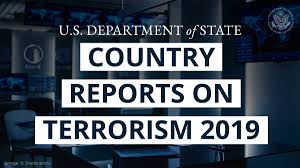 State Dept. lays out Iranian terror record amid push to extend arms embargo
State Dept. lays out Iranian terror record amid push to extend arms embargo